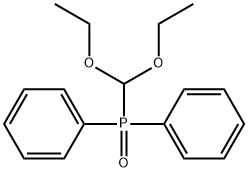A3214012
Di-n-octyltin oxide , 98% , 870-08-6
Synonym(s):
Dioctyloxostannane;Dioctyltin oxide
CAS NO.:870-08-6
Empirical Formula: C16H34OSn
Molecular Weight: 361.15
MDL number: MFCD00013839
EINECS: 212-791-1
| Pack Size | Price | Stock | Quantity |
| 25G | RMB64.00 | In Stock |
|
| 100G | RMB176.00 | In Stock |
|
| 500G | RMB398.40 | In Stock |
|
| others | Enquire |
Update time: 2022-07-08
PRODUCT Properties
| Melting point: | 245-248°C (dec.) |
| bulk density | 700kg/m3 |
| Density | 1,3 g/cm3 |
| vapor pressure | <0.01 hPa (20 °C) |
| Flash point: | 70°C |
| storage temp. | Store below +30°C. |
| solubility | Toluene (Slightly) |
| form | Powder |
| Specific Gravity | 1.30 |
| color | White |
| Water Solubility | Insoluble |
| Boiling point: | 230°C (1013 hPa) |
| Exposure limits | ACGIH: TWA 0.1 mg/m3; STEL 0.2 mg/m3 (Skin) NIOSH: IDLH 25 mg/m3; TWA 0.1 mg/m3 |
| LogP | 6 at 20℃ |
| CAS DataBase Reference | 870-08-6(CAS DataBase Reference) |
| EPA Substance Registry System | Stannane, dioctyloxo- (870-08-6) |
Description and Uses
Dioctyltin oxide is used as a stabilizer and as a widely applicable catalyst, especially for esterification reactions, transesterification reactions and condensation reactions. It is slightly less reactive than dibutyltin oxide, but is not subject to as many regulatory restrictions, which is why it is increasingly used. Dioctyloxotin can also be used in various chemical synthesis such as in preparation of trinuclear seven-coordinated tin complexes, having possible antioxidant, and anti-inflammatory activity.
Safety
| Symbol(GHS) |  GHS07 |
| Signal word | Warning |
| Hazard statements | H413 |
| Precautionary statements | P273-P501 |
| Hazard Codes | Xi |
| Risk Statements | 36/37/38 |
| Safety Statements | 37/39-26-24/25 |
| RIDADR | UN3146 |
| WGK Germany | WGK 2 water endangering |
| RTECS | WH7620000 |
| Autoignition Temperature | >100 °C |
| TSCA | Yes |
| HazardClass | 6.1 |
| PackingGroup | III |
| HS Code | 29310095 |
| Toxicity | LD50 orally in Rabbit: 2500 mg/kg |




